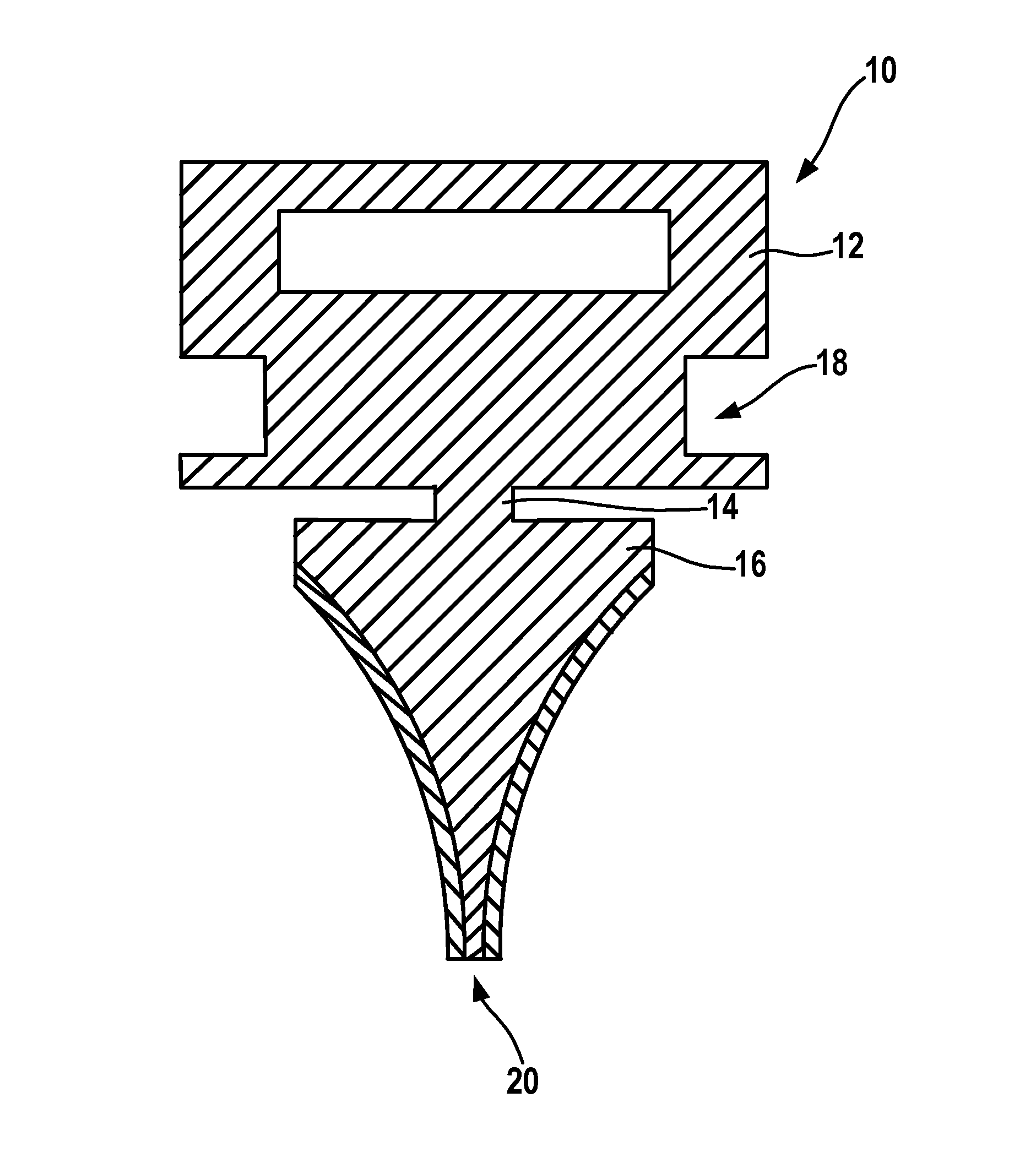Rubber material of a wiper blade for windshield wipers and process for production thereof
a technology of windshield wipers and wiper blades, which is applied in the direction of domestic applications, vehicle maintenance, transportation and packaging, etc., can solve the problems of good miscibility of the present rubber material and the rubber components
- Summary
- Abstract
- Description
- Claims
- Application Information
AI Technical Summary
Benefits of technology
Problems solved by technology
Method used
Image
Examples
Embodiment Construction
[0012]FIG. 1 shows a wiper-rubber profile 10 for wiper blades of a windshield wiper. This profile has been designed in essence in the form of a strip and encompasses a broadened stock 12, connected by way of a tiltable web 14 to a wedge-shaped section 16. The stock 12 has recesses 18 to accept an external spring bar (not shown). The wedge-shaped section 16 narrows to give a wiper lip 20 at its end facing away from the stock 12 and facing toward the glass area to be cleaned. The stock 12, wedge-shaped section 16 and tiltable web 14, being constituents of the wiper-rubber profile 10, can have been designed in a single piece made of one and the same rubber material. However, it is also possible that the stock 12 and the wedge-shaped section 16 are designed from different rubber materials, since the mechanical requirements profile for these two profile components is markedly different.
[0013]In order to achieve good wiping quality in the resultant wiper-rubber profile 10, this has prefer...
PUM
| Property | Measurement | Unit |
|---|---|---|
| polarity | aaaaa | aaaaa |
| physical | aaaaa | aaaaa |
| mechanical | aaaaa | aaaaa |
Abstract
Description
Claims
Application Information
 Login to View More
Login to View More - R&D
- Intellectual Property
- Life Sciences
- Materials
- Tech Scout
- Unparalleled Data Quality
- Higher Quality Content
- 60% Fewer Hallucinations
Browse by: Latest US Patents, China's latest patents, Technical Efficacy Thesaurus, Application Domain, Technology Topic, Popular Technical Reports.
© 2025 PatSnap. All rights reserved.Legal|Privacy policy|Modern Slavery Act Transparency Statement|Sitemap|About US| Contact US: help@patsnap.com

